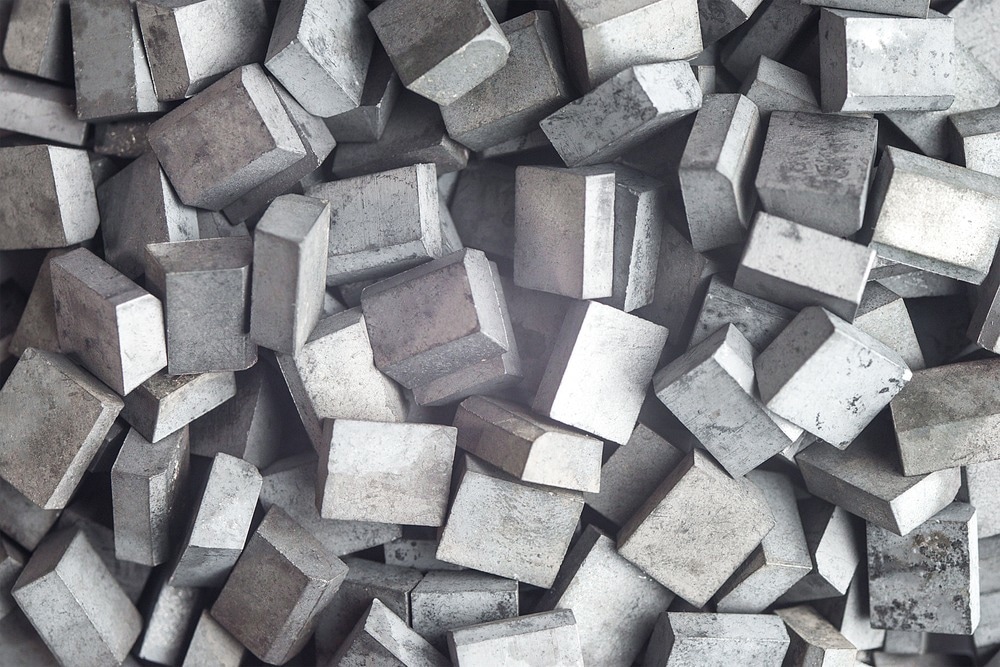The latest article published in the journal Additive Manufacturing presents a thorough review of the additive manufacturing processes of refractory metal tungsten and its alloys.

Study: A review on additive manufacturing of refractory tungsten and tungsten alloys. Image Credit: AkulininaOlga/Shutterstock.com
Advantages of Tungsten Alloys
Tungsten and tungsten alloys are refractory metals that are utilized for various industrial applications. This is due to their exceptionally high density and other outstanding properties such as superior thermal capabilities, increased toughness, low sputtering efficiency, and hydrocarbon interactions.
Photon projecting modules for fusion power, plasma warheads, armor-piercing rounds, and nuclear spacecraft propulsion are among the diverse industrial applications.
Advantages and Limitations of Additive Manufacturing
Additive manufacturing (AM) provides exceptional morphological freedom of design and a quick testing capacity that traditional production processes cannot match.
Furthermore, AM can create functionally graded transitions from tungsten to a variety of different materials.
Due to its exceptionally high melting temperature (Tm= 3422 °C for pure tungsten) and brittle character, tungsten is famously difficult to produce using either laser- or electron-beam-based AM processes.
The most prevalent processes for fabricating tungsten alloys are laser powder-bed-fusion (L-PBF)—also known as selective laser melting (SLM)—laser directed-energy deposition (L-DED), and electron beam powder-bed-fusion (EB-PBF), otherwise known as electron beam melting (EBM).
Introduction to Laser-Powder-Bed Fusion (L-PBF)
L-PBF is a popular AM-based process for metals and alloys as well as some ceramic substances. The powder is deposited layer by layer (20-150 m thick) throughout this procedure, and a laser beam (both steady and pulsating frequency) is used to selectively vaporize the specific destination.
Topographic layer thickness, beam powder, scan rate, and hatch separation are some essential elements that determine material build quality.
Cracking Phenomena in L-PBF
Cracking is identified as the most difficult challenge in L-PBF W. None of the relevant literature claimed crack-free specimens, except when a femtosecond laser diode was utilized. In general, two different types of cracks have been discovered in L-PBF W: longitudinally propagating (crack pattern parallel to laser scanners axis) and branching or transverse cracks (fracture direction slanted to laser scanner direction).
Solution of Cracking Phenomena in L-PBF
To reduce cracks in L-PBF W, the inclusion of rare earth or other compounds into highly purified tungsten has been investigated. The researchers combined pure tungsten powder with one percent, five percent, and ten percent Tantalum (Ta) powder, and the inclusion of 5% Ta greatly reduced grain size. However, at 10% Ta, no further grain refining was detected.
Other documented solutions for crack suppression in L-PBF W include changing the tracking technique, recrystallization, and reheating the substrates. These procedures aim to reduce or eliminate residual tensions in tungsten produced during printing.
What is Laser Directed-Energy-Deposition (L-DED)?
L-DED is an additive manufacturing technology in which metal powder is injected into a laser-created melt zone. After the first layer is coated, the powdered injector goes upward and the second layer is accumulated. L-DED is typically performed in an argon environment with an argon pump. Owing to the additional variables associated with the process, L-DED is appropriate for the relatively speedy production of big parts while also providing exceptional freedom of design.
Cracking and perforation have been found in individual tungsten tracks, solitary layering alloys, and multi-layer deposition. Liquation breaking and latent strains from quick heating and cooling periods cause cracks.
The optimization of parameters and enhancing material integrity can help to tackle problems like reaching desired build thicknesses and reducing permeability. Furthermore, surface preheating has been proven to reduce latent stress-induced splitting.
Introduction to Electron Beam Melting (EBM)?
The powder particle substrate series of AM technologies include the EBM or EB-PBF process.
When melting, the beam of electrons possesses a relatively higher energy density, surpassing several kilowatts when focused on spot sizes of several hundred microns in diameter. EB-PBF takes place under regulated suction circumstances to both preserve the standards of the e-beam location diameter and counteract pressure variations caused by vaporization of the metals in the liquid form as the beam melts.
There is presently minimal investigation of EBM W's efficiency for thermal-mechanical activity. A three-point bend test was performed on an EBM W, and the bond strength was found to be 340 MPa, which is much less than standard wrought tungsten.
This category of high-temperature alloys is predicted to benefit from precise microstructure control and novel alloy design methodologies.
More from AZoM: What is Glow Discharge Optical Emission Spectrometry
Reference
Alberico T. et. al. (2022). A review on additive manufacturing of refractory tungsten and tungsten alloys, Additive Manufacturing. Available at: https://doi.org/10.1016/j.addma.2022.103009
Disclaimer: The views expressed here are those of the author expressed in their private capacity and do not necessarily represent the views of AZoM.com Limited T/A AZoNetwork the owner and operator of this website. This disclaimer forms part of the Terms and conditions of use of this website.